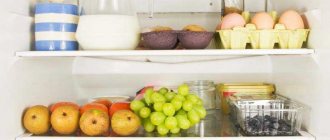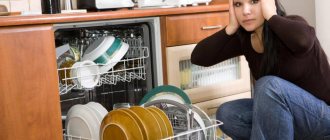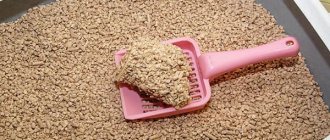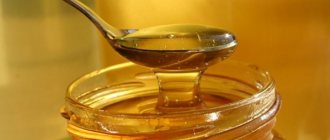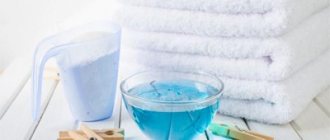What harm do plastic bottles cause?
Reusing plastic bottles is strongly discouraged. This has been repeatedly discussed by experts who have studied plastic containers and their impact on the human body, as well as the environment.
Important! Certain types of bottles contain chemicals that pose a risk to human health if used for other purposes.
Before answering the question about which plastic bottles can be reused, it is worth deciding on the types of the most harmful containers of this type. These include all products that contain bisphenol-A. It has the ability to penetrate the liquid inside the bottle and then enter the human body.
Excessive dosage of the chemical can have negative health effects:
- Hormonal disorders.
- Delayed sexual development.
- Hepatitis A.
- Digestive disorder.
- Allergic reactions.
This is not the only reason why plastic bottles should not be reused. Another disadvantage is that scratches may form on the surface of the plastic. Pathogenic microorganisms that can cause various diseases in humans easily multiply in them.
Reusing plastic bottles increases the chance of poisoning people who drink water and other liquids from them.
Characteristics of the main types of plastic
The table shows:
- Comparative characteristics of plastics used for food products and the potential risks associated with their use - these data do not mean at all that all food in plastic and utensils made from it are deadly, but harm, unfortunately, is not excluded (the likelihood of which is several times greater increases with improper use or recycling of disposable products).
- The average softening temperature of plastic is the temperature at which the destruction of the polymer begins and the active release of toxic substances into food and air.
- The digital designation is located in a triangle of arrows - you should look for it at the bottom.
| Name | Designation, softening point | Where is it used? | What might stand out? |
| Polyethylene terephthalate (PET, number 1) The most environmentally friendly polymer, but nevertheless, when recycled or improperly used, it can emit harmful substances |
| Disposable “soft” bottles for water and drinks, oils, sauces, beer, disposable tableware | Phthalates and formaldehyde |
| High-density polyethylene (HDPE, number 2) and low-density (LDPE, number 4) containing melamine-formaldehyde resins |
| Packaging for dairy products, reusable tableware, baby bottles, food film, grocery bags | Formaldehyde and methanol, which are released during photoaging (prolonged exposure to ultraviolet light) |
| Polyvinyl chloride (number 3, PVC) |
| Disposable bottles and caps for them, food film, containers, but more often - bottles for household chemicals | Vinyl chloride, formaldehyde, bisphenol A |
| Polypropylene (PP, number 5). Relatively safe and most common. There are high, medium and low pressure; only 1 type is allowed for food packaging. |
| Jars, containers and food containers, glasses, can be colored. Reusable dishes. | Formaldehyde, especially in contact with fatty foods and alcohol |
| Polystyrene (PS, number 6) |
| Disposable glasses, trays for packaging products (similar to polystyrene foam), jars for dairy products, forks, spoons, disposable knives, disposable containers | Styrene and formaldehyde |
| Polycarbonate (PC or PC) |
| Reusable and disposable bottles, including children's, plastic tableware, plastic parts of pacifiers, inner layer of metal cans | Bisphenol A |
| Melamine (Melsazh, Melamin, M). Prohibited for the food industry! | Melamine melts at 350 C. | Dishes that look very similar to porcelain | Formaldehyde |
| Mixtures of plastics (number 7). This includes polycarbonate, polyamide and other types of plastics | Water bottles, packaging | Bisphenol A, formaldehyde and others, summing up the negative effects |
Are ABS plastic and San plastic harmful or not?
These types of plastic are not used for food. SAN plastic is a styrene copolymer, the same as ABS plastic. It is a rigid, heat-resistant plastic of several classes, which is mainly used for industrial and domestic purposes, but not for products in contact with food and drinks. In the temperature range from -40 C to +80 C, both types of plastic do not change their properties and do not release chemical elements into the environment. In addition, they can withstand short-term heating up to 105 C. But they cannot be used for food products.
| Plastic San | ABS plastic |
|
|
Marking
Plastic that is used for the production of utensils and products that come into contact with food (food plastic) is subject to certification and undergoes mandatory examination for compliance with sanitary and hygienic standards.
Manufacturers of food-grade plastic are required to label their products accordingly. There are generally accepted markings for plastic utensils - fork and glass. But the crossed out fork and glass indicate that the product cannot be used for food.
The product may indicate what products it is intended for (cold, hot, bulk, liquid), where it can be used (in a microwave oven, for freezing, etc.).
| Some manufacturers sometimes indicate the temperature range of use. | |
| Markings can be words or icons: | |
| |
| |
| |
Plastic for hot foods and microwaves
Now there are effective methods for polymerizing and purifying plastic, which has made it possible to develop heat-resistant types of plastic. On the bottom of such containers it is written “for hot foods”. Such containers are used to fill machines for preparing hot drinks and are often used in catering.
Plastic marked “for hot foods” and for “microwave oven” are different products:
- Only those containers that are marked with the “stove with waves” icon or labeled “for microwave oven” can be used in a microwave oven.
- Hot labeling means you can drink hot tea or eat hot soup, but do not cook or reheat in the microwave.
When utensils for hot food are repeatedly used, an “aging effect” occurs: under the influence of oxygen and heat, long polymer molecules break down into short pieces, which end up in food.
Which bottles can be used several times?
The answer to the question of whether plastic bottles can be reused has been mixed. This is because there is a category of products that are not affected by this ban.
The following containers are suitable for long-term storage and frequent use:
- Plastic 2 (PEHD, HDPE, LDPE). It is made from high-density polyethylene. Most often, dairy and fermented milk products are stored in it.
- Plastic 4 (PELD (LDPE), HDPE). It is made from low density polyethylene. Such containers are actively used for detergents.
- Plastic 5 (PP, PP). These are products made of polypropylene. It is ideal for a variety of products including yoghurts.
- Plastic 7. It is made from several types of plastic. Can be used no more than 50 times.
The containers listed above are safe for repeated use only if they are used correctly.
Why is PET bottle recycling necessary?
The reuse of plastic entails a number of positive processes, the main of which are:
- Increased production of in-demand goods.
- Reducing the cost of creating plastic products.
- Receiving additional income.
- Preservation of the environment.
In countries where waste recycling has become a developed industry, recycled PET is widely used in industrial production.
Various types of goods are made from recycled raw materials :
How to properly wash plastic bottles
Above we discussed which plastic bottles can be reused. It is also worth considering the issue of proper washing of containers for further use.
Before reusing plastic bottles, you should wash them according to the following guidelines:
- For these purposes, you should use a solution with detergent or soda.
- Soap can be replaced with an antibacterial agent or vinegar.
- It is prohibited to treat plastic containers with boiling water.
- The neck and cap of the bottle should be washed especially carefully.
- It is recommended to use a special brush to clean the bottom.
In order not to expose yourself to danger, you should refuse to reuse plastic containers. To understand this, it is enough to familiarize yourself with the reasons why plastic bottles cannot be reused.
Article rating
What can we reuse?
17 things that can be reused
- Egg containers Plastic and cardboard egg containers, firstly, can be reused
for their intended purpose. ... - Ground coffee …
- Cotton clothes and towels…
- Plastic bags …
- Banks...
- Toothbrush …
- Shower cap …
- Laces and ribbons
Interesting materials:
How to get to kindergarten? How to get to Greece now? How to get into Qiwi wallet? How to get on the list of important friends on VK? How to get on the list of important ones in VK? How to get to Vks? How to top up Beeline balance through the terminal? How to top up your Beeline Kazakhstan balance? How to top up the balance of another subscriber? How to top up your Payeer e-wallet balance?
Why is plastic harmful to nature?
Biodegradable plastic
releases methane, this gas enters the atmosphere and contributes to the creation of the greenhouse effect, which accelerates global warming;
a huge amount of plastic
in the oceans, and as it decomposes, the material also releases toxic substances.
Interesting materials:
When is interest accrued on the world pension card? When will they start transferring benefits to the world map? When should a new employee sign a card? When is the green card application submitted? When did the first map appear? When did bank cards appear in Ukraine? When did electronic cards appear? When did Azerbaijan appear on the map? When does the survivor's pension come into play? When does the survivor's pension arrive on the card?
How to sterilize juice bottles?
Place the pan on the fire and place the bottles
upside down. When the water boils, the steam sterilization process will begin. Fifteen minutes is enough. Drops of steam that have formed inside the bottles should drain.
Interesting materials:
Who's left on The Bachelorette? Who carries out state management of labor protection at the regional level? Who monitors the state of labor protection at the enterprise? Who carries out medical and social examination? Who implements law enforcement measures? Who supervises labor safety? Who supervises parolees? Who directly manages the RSChS? Who manages civil defense in the federal executive authorities? Who exercises judicial review?
